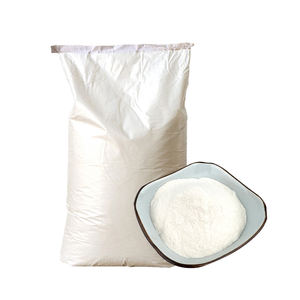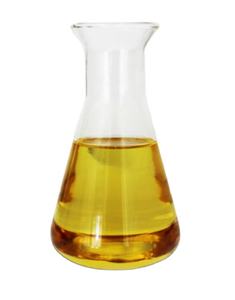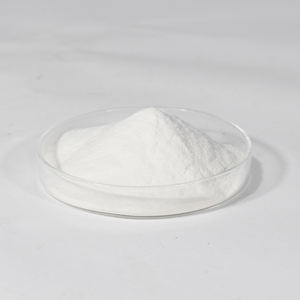
Heat Barrier Material Aerogel Silica Aerogel Powder

Cosmetic Raw Material Anionic Surfactants sci 85% sodium cocoyl isethionate foaming agent for soap cas61789-32-0

Free sample Customized Color Liquid Silicone Rubber for Artificial Stone Mold Silicone Rubber for Concrete Plaster Mold

polycarboxylate superplasticizer powder with low dosage and high slump retention Concrete Additive

concrete admixture thickening agent additives sodium polyacrylate

Polycarboxylate Superplasticizer use Sodium Methylallyl Sulfonate 99.5%
The bottom floor of floor heating can prevent heat from transferring down, and make heat transfer up in one direction, which can save heat. Therefore, the insulation layer must have an excellent insulation effect. Floor heating insulation must also have a specific strength to withstand the upper load, and in addition, the floor heating insulation layer also plays a role in fixing water pipes. The quality of the thermal insulation layer directly affects the quality of the whole thermal engineering. So, the material of the floor heating insulation layer is taken seriously by more and more professional personage inside course of study. There are two primary materials in the market, one is polystyrene foam board, and the other is foam concrete.

1. The benzene board
The thermal conductivity of the benzene plate is 0.041/w(m.k), which has an excellent thermal insulation effect and is an ideal thermal insulation material for floor heating. However, the benzene plate has the following disadvantages :
(1) It is easy to be compressed and deformed. Under the action of concrete dead weight and static and dynamic load, the benzene plate is easy to be compressed and distorted.
(2) Deformation caused by fatigue strength. The designed service life of floor heating is several decades. In the long-term use process, the dynamic load of the floor will produce fatigue strength to the benzene plate. The bearing capacity of the benzene plate decreases, the deformation is further increased, and the ground will sag accordingly.
(3) Increase of thermal conductivity. Due to the compression deformation of the benzene plate, its density increases, so the thermal conductivity will also rise. Insulation will also decrease.
2.Foam concrete insulation layer
Foam concrete is another insulation material after the benzene board. Foaming cement used in-floor heating, general bulk weight 350 ~ 450kg/m3, thermal conductivity 0.087w /m.k, the content not only has the advantages of high compressive strength, low thermal conductivity, stable chemical performance, environmental protection, no deformation, and leveling layer and thermal insulation layer in one, fast construction, low cost, is one of the best choice of floor heating insulation layer. In contrast, foam concrete has more advantages than the benzene board. This paper will focus on the performance characteristics and construction application of foam concrete .

(1) Heat insulation
The thermal conductivity was between 0.05 and 0.15Kcal/mh℃. Heating insulation means that the heat pipe moves up to facilitate the release of heat in the specified direction.
(2) Lightweight
The density is 350 ~ 450kg/m3, which can reduce the load of the building.
(3) Sound insulation
Because the frequency of the benzene board is too low, someone on the surface will produce a hollow sound foam cement because of the numerous independent bubbles formed by the porous, so the sound absorption effect is five times higher than the general concrete and resistant to vibration.
(4) Convenient construction, high efficiency
Foam concrete is a liquid transported by high pressure mechanical, foam concrete slurry dispersion, mobility is perfect, suitable for development and irrigation, construction saves manpower and material resources, the surface after solidification is smooth and smooth, construction speed is fast: each shift can be construction 3000 ~ 4000 square meters, saving construction period. The benzene plate laying technology is cumbersome, fixed pipe u-shaped nail easy to come out, need PE aluminum film and wire mesh.
(5) It has a specific compressive strength
Foam concrete has excellent compressive strength: when the density is 350kg/m3, the 7-day compressive strength is 6kg/cm2. Oneself have certain intensity, have the bearing effect that supports floor heating tube material and ground, because of its have a certain depth, not easy be out of shape, the field that can avoid using benzene board to form cracks, make indoor ground level, smooth and clean.
(6) Good integrity
Foam concrete, ground structure layer, and heating filling layer are all concrete products on the material, with excellent overall performance, and overcome the empty drum phenomenon of the floor heating insulation layer of the benzene board. But the benzene plate material in the long-term use (such as after heating) easy deformation, affect the integrity of the structure.
(7) Environmental protection
Traditional benzene board materials have peculiar smell, containing harmful volatile health, easy to produce chemical pollution, high temperature is comfortable to decompose toxic components; Terms used in the concrete foaming agent for concrete for plant sex protein fibers and animal protein, non-toxic harmless completely overcomes the drawback of this aspect.

(8) Good adhesion
Foam concrete and the floor structure layer are concrete products, which have excellent adhesion with the floor and can also leveling the floor. However, the benzene board and the story are two materials that cannot be well combined, so the structure layer is affected, and the floor structure layer needs to be leveled before laying the benzene board.
(9) Economy
Due to the construction of the use of mechanical pipeline transport effectively save the workforce, materials only water, cement, bubble agent, significantly save the cost of the project.
(10) Long-term effect
Benzene plate natural aging, the shelf life of 6 years, usually after one-year deformation, ground subsidence or cracks, deformation at 60℃ immediately aging; Foam concrete insulation has high stability and anti-aging performance, which can effectively guarantee the leveling of indoor ground and no cracking.
Its service life is 5 ~ 10 times of benzene board, it and concrete have the same service life.
(11) Fire resistance
Benzene plate easy to burn, fire melting, and burning to release toxic objects; Foam concrete is an inorganic material, which will not burn and has the right amount of fire resistance. It can be used on buildings to improve the fireproof performance of buildings.
(12) Water absorption and moisture resistance
Foam concrete has deficient water absorption, because it is a closed-hole structure, in the wet state in the center of the plate, after a few months is still completely dry and retain its dry state of strength, than the ordinary floor anti-seepage enhancement of more than six times.
(13) Requirements for filling layer
Because the benzene plate is soft and smooth to compression deformation, so the filling layer needs to be thickened, more than 40mm, otherwise it will fracture; Foam concrete is integrated with the filling layer, which has high overall strength. Therefore, the thickness of the filling layer only needs 30 ~ 40mm.
Foam concrete shows excellent advantages in future market competition with its unique performance. Especially with the strengthening and implementation of energy conservation and environmental protection policies, its benefits are more prominent in ecological protection and energy conservation. Foam concrete will develop towards high strength, lightweight, composite, and energy saving.
Ask a quote for the latest price and one of our team members will respond as soon as possible. Fields marked with * are required.




